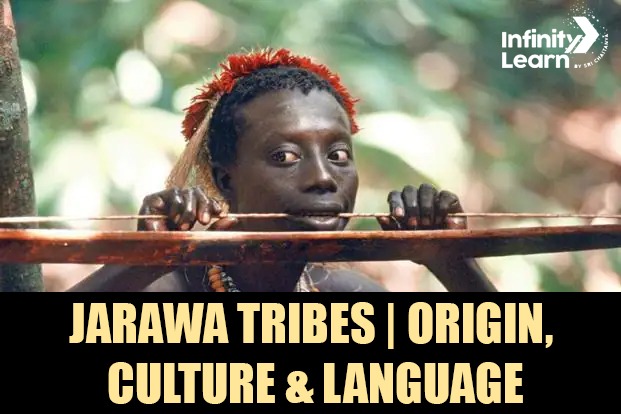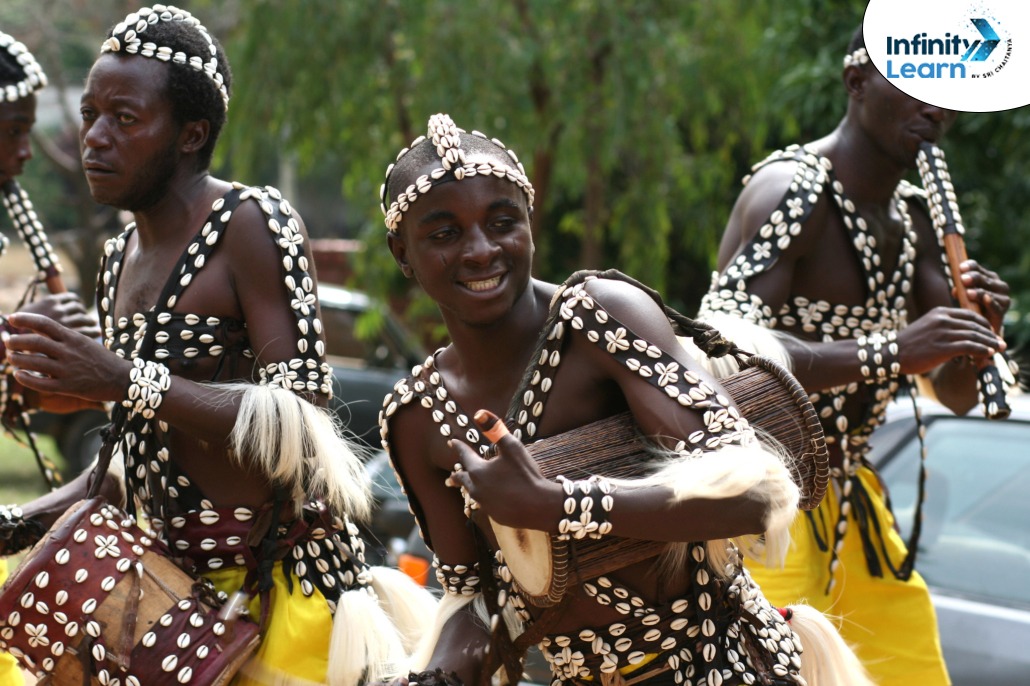Table of Contents
Jarawa Tribe: Explore the intriguing world of the Jarawa, an indigenous group from the Andaman Islands. This comprehensive study explores the origins of the Jarawa, providing a deep understanding of their historical background and ancient traditions.
The Jarawa tribe, one of the oldest hunter-gatherer populations globally, has lived self-sufficiently on their ancestral lands in the Andaman archipelago for thousands of years. Their sustenance comes from the abundant forest and marine resources, complemented by a traditional medicinal system. The Jarawas are known for their robust physique and excellent nutritional health. They remained in extreme isolation until 1996, when more information about their healthcare practices began to emerge.

Introduction to the Jarawa Tribe
The Jarawa Tribe, one of the indigenous groups of the Andaman and Nicobar Islands, offers a fascinating glimpse into a unique way of life that has persisted for thousands of years. Living in the heart of the Andaman Islands, these people have managed to maintain their traditional customs and practices despite the encroachment of modernity. This blog delves into the origins, culture, language, and lifestyle of the Jarawa Tribe, offering insights into their food, marriage customs, clothing, and more.
The Jarawa Tribe represents a living cultural heritage of the Andaman Islands. Their existence offers a rare glimpse into a traditional way of life that has been preserved for centuries. Efforts to protect their land and culture are ongoing, as the tribe navigates the challenges of the modern world while striving to maintain their ancient traditions.
Also Check: Gond Tribes
Origin of the Jarawa Tribe Andaman
Experts think the Jarawa Tribe has inhabited the Andaman Islands for around 20,000 years, though their exact beginnings are still unknown. Archaeologists believe the Jarawa are some of the first inhabitants of the Andaman and Nicobar Islands. Over thousands of years, their way of life and survival methods have adapted to the unique environment of the islands.
Jarawa Tribe in Hindi: जारवा जनजाति
जारवा जनजाति अंडमान और निकोबार द्वीपसमूह की एक प्राचीन आदिवासी जनजाति है। यह जनजाति अपने पारंपरिक रीति-रिवाजों और जीवनशैली के लिए प्रसिद्ध है। यहाँ की सांस्कृतिक धरोहर और भौगोलिक स्थिति इस जनजाति की पहचान को और भी मजबूत बनाती है।
Jarawa Tribe Food: A Culinary Insight
The Jarawa Tribe’s diet is simple yet diverse, relying heavily on the natural resources available in their environment.
- Their food primarily consists of seafood, fruits, and tubers.
- They are skilled hunters and gatherers, catching fish, crabs, and mollusks from the sea, and foraging for wild fruits and vegetables from the forest.
- Traditional cooking methods involve roasting and boiling, which helps retain the natural flavors of the ingredients.
Also Check: Khasi Tribes
Jarawa Tribe Marriage: Traditions and Customs
The Jarawa Tribe views marriage as a significant event that they celebrate through traditional customs and rituals. Families typically arrange the marriages, and the process includes several ceremonies. One notable custom involves communal living, where extended families live together and support each other in their daily lives. They celebrate marriages with feasts, dancing, and singing, which serve as integral expressions of their culture.
Jarawa Tribe Lifestyle: Day-to-Day Life
The Jarawa Tribe leads a lifestyle that is closely connected to nature.
- Their daily activities revolve around hunting, fishing, and gathering food.
- They live in small, temporary huts made from natural materials such as palm leaves and bamboo.
- Their lifestyle is highly sustainable, with a profound respect for the environment and its resources.
- Social structures within the tribe are egalitarian, with decisions made collectively and conflicts resolved through discussion.
Also Check: Indian Tribes
Jarawa Tribe Location: Where They Live
The Jarawa Tribe houses on the western coast of Middle and South Andaman Islands, part of the Andaman and Nicobar Islands in India. Their territory stretches from the north of the Andaman Islands down to the southern reaches, where they live in small communities scattered along the coast. The region is characterized by dense forests, mangroves, and pristine beaches, providing a rich habitat for both the tribe and the wildlife they depend on.
Jarawa Tribe Clothing: Traditional Attire
Traditional clothing among the Jarawa Tribe is minimal and functional, designed to suit the tropical climate of the Andaman Islands.
- Both men and women wear simple garments made from natural fibers.
- Men typically wear a loincloth, while women wear a skirt-like garment.
- They adorn themselves with ornaments made from shells, beads, and bones, which hold cultural significance and are often worn during ceremonial occasions.
Also Check: Art and Culture of Andaman and Nicobar Islands
Jarawa Tribe Photos: A Visual Journey

While this blog provides an overview of the Jarawa Tribe, photos can offer a more vivid representation of their life. Images of the Jarawa people, their traditional clothing, and their natural surroundings capture the essence of their daily life and cultural practices. These photos help in understanding the tribe’s connection to their environment and the beauty of their traditional lifestyle.
Also Check: Tribes of Nagaland
Problems Faced by Jarawa Tribes
The Jarawa people, who live on the Andaman Islands in the Bay of Bengal, face many special and difficult challenges. These challenges come from different sources, including changes in their environment, threats to their traditional way of life, and interactions with the outside world. Understanding these issues is essential to addressing their needs and protecting their culture.
1. Environmental Degradation
The Jarawa’s land is facing serious environmental problems. Deforestation, illegal logging, and growing tourism are damaging their natural home and upsetting the balance of their ecosystem, which is crucial for their survival.
2. Tourism Impact
More tourists are visiting the Andaman Islands, leading to more contact between the Jarawa and outsiders. Although tourism can bring money, it also risks harming their culture, spreading diseases, and invading their privacy and traditional ways of life.
3. Loss of Traditional Knowledge
Modern influences are causing the Jarawa to lose their traditional knowledge and customs. Younger generations are exposed to outside cultures and technologies, which might lead to forgetting their language, customs, and heritage.
4. Health Issues
The Jarawa face major health problems because they lack modern medical care. New diseases from outsiders and limited healthcare services make them vulnerable to health issues, both common and rare.
6. Cultural Displacement
External influences and modern development projects are threatening the Jarawa’s cultural traditions. New societal norms and practices pose a risk of displacing their traditional ways of life.
7. Climate Change
Climate change is a big threat to the Andaman Islands. Rising sea levels, more extreme weather, and changes in natural resources endanger the Jarawa’s traditional way of life and could cause them to lose their ancestral lands.
8. Educational Disparities
The Jarawa struggle with getting proper education. There are not enough educational resources and facilities, leading to gaps in education and limiting opportunities for the younger generation to learn while maintaining their cultural identity.
Also Check: Tribes of Manipur
Conclusion
The Jarawa Tribe stands as a testament to the enduring nature of traditional societies. Their rich cultural heritage, distinctive lifestyle, and unique practices offer valuable lessons about living in harmony with nature and preserving cultural identities. As we learn about their food, marriage customs, clothing, and daily life, we gain a deeper appreciation for the diverse tapestry of human experience.
For those interested in exploring more about the Jarawa Tribe, visiting the Andaman and Nicobar Islands offers a chance to witness their way of life firsthand and support conservation efforts aimed at preserving their culture.
Jarawa Tribes FAQs
Where do the Jarawa tribes live?
The Jarawa tribe resides on the western coast of the Andaman Islands in India. Their traditional territory stretches along the western side of Middle and South Andaman Islands, where they live in small communities scattered across the dense forested region.
Where did the Jarawa people come from?
The origins of the Jarawa people are not completely clear, but they are believed to be one of the indigenous groups of the Andaman Islands. They have lived in this region for thousands of years, developing a unique culture and way of life that has been adapted to the island environment.
Are Jarawas friendly?
The Jarawas are generally reserved and prefer to maintain their traditional lifestyle away from outsiders. While they have had limited contact with the outside world, they are known to be cautious and may not welcome uninvited visitors.
Can you visit the Jarawa tribe?
Direct visits to the Jarawa tribe are restricted by Indian government regulations to protect their way of life. Tourists are not permitted to visit their villages or interact with them directly to ensure their cultural and environmental preservation.
What do Jarawas eat?
The Jarawa diet primarily consists of foods gathered from their natural surroundings. They eat a variety of fruits, vegetables, fish, and game animals, relying on hunting, fishing, and foraging for their subsistence.








